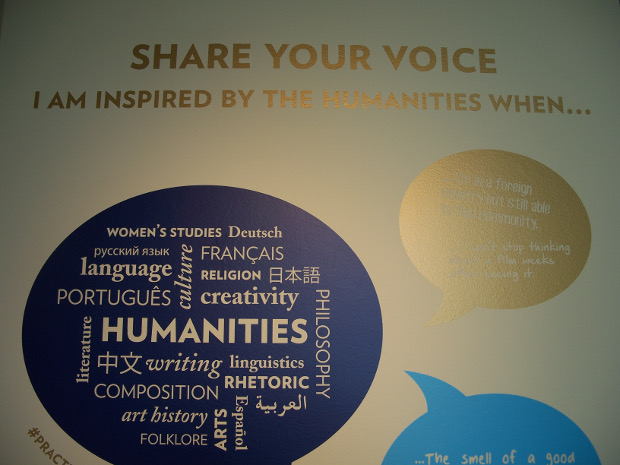BYU Exhibition Celebrates Humanities’ Role in Human “Conversation”
Contributed By Jason Swensen, Church News staff writer

The humanities exhibition teaches that words and art are the vehicles of revelation. Evidence is found in inspired paintings, sacred architecture, and poetry. The exhibition will remain open through November 23, 2016.
Article Highlights
- The exhibition is open through November 23, 2016.
“Study and learn, and become acquainted with all good books, and with languages, tongues, and people.” —D&C 90:15
Related Links
There’s a challenging question posed at the entrance of the Brigham Young University exhibition 50 Years of Fluency in the Human Conversation: How do you harmonize the secular and the sacred?
Latter-day Saints often follow their own secular/sacred system of classification. There are work clothes and church clothes. Sunday music and “rest of the week” music. Regular books and gospel books. Even the way members converse—the topics, words, and manner in which they speak—seem to fall on the sides of secular or sacred.
But the exhibition, found on the top floor of the Joseph F. Smith Building at the Church-owned campus, argues that the gap between secular and sacred need not exist. The divine can be found in all forms of expression, or “conversation.” The Lord has often encouraged His children to seek learning: “Study and learn, and become acquainted with all good books, and with languages, tongues, and people” (D&C 90:15). The glory of God is, after all, intelligence. It is light and truth. And “light and truth forsake that evil one” (D&C 93:36–37).
Language and art, the exhibition also teaches, were the vehicles of revelation which fueled the Restoration.
The multimedia display champions the study and practice in the humanities through literature, languages, philosophy, art history, and linguistics. Humanities, according to the exhibition website, allows for “the human conversation across divergent cultures, times, tongues, and peoples.”
Through the humanities “we learn to see things in new ways, read unfamiliar texts and scripts, and come to know others as human beings and children of God rather than stereotypes,” wrote J. Scott Miller, the dean of BYU’s College of Humanities. The exhibition also doubles as a birthday party.
Fifty years ago the College of Humanities became its own academic unit. Its stated charge over the past half-century has been to prepare BYU students to face the changing demands of the workplace and the community by learning to “converse.”
The exhibition explores the many voices in the human conversation through traditional humanities fields such as art, language, and literature. Visitors can participate by posting notes on how they are inspired by the humanities. A sprawling map of the world reveals the many ways BYU students incorporate the humanities as they live, study, and serve the nations of the world.
50 Years of Fluency in the Human Conversation is open through November 23, 2016. Admission is free.

The voices of human conversation are found in fields of humanities such as art, literature, and language. The BYU College of Humanities exhibit, 50 Years of Fluency in the Human Conversation, will remain open through November 23, 2016. Photo by Jason Swensen.

A sprawling wall map at the 50 Years of Fluency in the Human Conversation exhibition reveals the global reach of the humanities for BYU students. Photo by Jason Swensen.

BYU's College of Humanities is housed at the Joseph F. Smith Building. The college's exhibition, 50 Years of Fluency in the Human Conversation, will remain open through November 23, 2016. Photo by Jason Swensen.

The voices of human conversation are found in fields of humanities such as art, literature, and language. The BYU College of Humanities exhibit, 50 Years of Fluency in the Human Conversation, will remain open through November 23, 2016. Photo by Jason Swensen.
